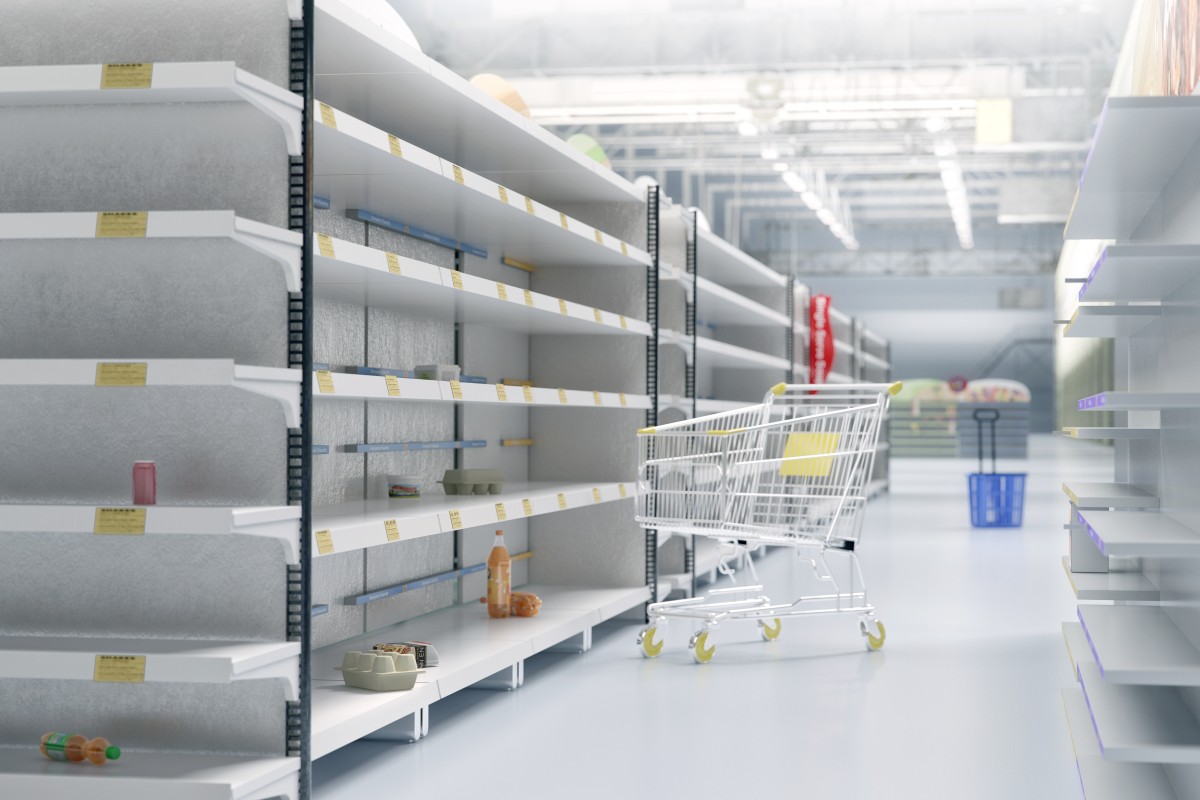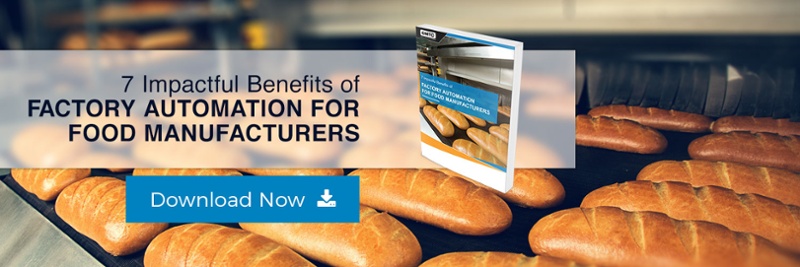January 19, 2021 | Health & Safety Services, Food and Beverage
How Can Food Manufacturers Prepare For a Second COVID-19 Demand Surge?

The COVID-19 pandemic has impacted most industries in the U.S., with food manufacturing being one of the hardest hit sectors. Besides shortages in raw materials, supply chain disruptions, and lockdown restrictions, panic stockpiling by consumers resulted in a rapid shift in demand, further compounding the challenges facing food manufacturers. Many in the food industry were caught off guard by increased consumer demand and, as the U.S. went into national lockdown in March 2020, the following months saw many grocery shelves frequently bare.
Despite these challenges, supply chain disruptions were eventually mitigated to reduce grocery store shortages. However, uncertainty looms over the horizon and any number of events could cause the stockpiling trend will return. Here’s how food manufacturers can learn from the past and avoid potential shortages again.Quick Links:
- Will There Be A Second Stockpile Surge?
- Previous Stockpiling Impacts on Food Manufacturing
- How Food Manufacturers Can Prepare for Rapid Shifts in Demand
Will There Be A Second Stockpile Surge?
COVID-19 cases are continuing to rise in Europe with experts warning of a second wave of the virus. Rising cases are also being mirrored across the Atlantic in the U.S., where a resurgence of infections and the winter season have made experts caution that the virus has not gone away just yet.
This concern has not gone unnoticed by consumers, many of whom have resumed panic buying. A recent survey found that 57% of consumers are considering restocking supplies amassed at the start of the pandemic in March and April 2020, while another 27% have cited the coming winter months as a reason to stockpile as well. The survey also found that another 54% of respondents said they aim to be prepared by always having a stockpile of key items going forward.
Previous Stockpiling Impacts on Food Manufacturing
Grocery stores experienced an exponential increase in demand at the beginning of the pandemic due to restaurant closures, more people eating at home, and emergency preparations. In a seven-day period that ended March 18, 2020, grocery sales were up nearly 80 percent from 2019. Compared with the previous year, frozen food sales were up over 92%; and packaged foods, such as processed and canned goods, saw a 76% jump.
As items flew off of shelves, overwhelmed supply chains were not able to provide reliable distribution systems to supermarkets, resulting in widespread product shortages. Global lockdown restrictions and social distancing measures within food facilities put stress on the industry’s supply chains, so while there was no food shortage in America, grocery store shelves were frequently empty of meat, pasta, and other goods. Many meat processing facilities were shut down across the U.S. to protect employees, resulting in limited amounts of pork, poultry, and beef. Pasta products witnessed a 30% increase in demand, but bottlenecks due to transportation and employee shortages made it difficult to get products to grocery shelves and into consumers' hands.
While the next few months are unlikely to rival this previous demand, the food manufacturing industry needs to be prepared to deliver in order not to repeat the past. Many food manufacturing giants, such as General Mills and PepsiCo, have already made efforts to ramp up production in case of a second wave of stockpiling. While General Mills is adding 45 external production lines to boost manufacturing, Campbell Soup Company is spending $40 million to increase the production of some of its more popular products. It’s hoped that these measures will ward off any potential shortages that made empty grocery shelves a mainstay of the past months.

How Food Manufacturers Can Prepare for Rapid Shifts in Demand
In the case of rapid shifts in consumer demand, food manufacturers can mitigate negative effects with the following methods.
Utilization of Smart Technology
Advancements in smart technology have given food manufacturers an unprecedented amount of visibility into their operational efficiency, allowing them to detect any vulnerabilities before an issue arises. By using such tools to track material flow and equipment analytics, manufacturers can better grasp valuable data to make well-informed decisions.
Implementing tools to better capture material flow can provide data about the raw materials, quality attributes, movement, and equipment involved in the process of creating your final product. Since material flow tracks the efficiency of products through the supply chain, this data can identify areas of improvement in the production and supply chain process, such as highlighting machine inefficiency, energy waste, or other factors which could be impacting your bottom line.
Smart technology tools allow for meticulous tracking of material flow. Food manufacturers can now install physical sensors to collect data on manual processes throughout their factories and locations. These sensors collect data that defines material movements, quality attributes, material locations, and other critical information that can influence decisions and provide actionable insights to improve overall supply chain management.
Business Continuity Planning
Although these tools allow for improved visibility into industry operations, you still need a plan for mitigating disruption in order to foster long-term profitable growth.
With business continuity planning, food manufacturers can prepare their businesses for success, even in the face of disruptions. A business continuity plan is a living document that defines the steps that will be taken in the face of a given event. Developing a business continuity plan is especially crucial for small to medium-sized manufacturers, for whom loss of revenue and increased costs from supply chain disruptions can be devastating.
By developing and implementing a business continuity plan, food manufacturers can prepare for rapid shifts in demand, supply chain disruptions, or other industry challenges — pandemic-related or otherwise.
Ready to build a resilient future with a business continuity plan? CMTC offers a Business Continuity and Resilience Planning development program to help small-to-medium-sized manufacturers prepare for disruptions and recover their operations. Contact us today and we can provide you with the best options for your food manufacturing business so you can prepare for a successful future.
About the Author
Gregg Profozich
Gregg Profozich is a manufacturing, operations and technology executive who believes that manufacturing is the key creator of wealth in the economy and that a strong manufacturing sector is critical to our nation’s prosperity and security now, and for future generations. Across his 20-year plus career in manufacturing, operations and technology consulting, Mr. Profozich helped manufacturing companies from the Fortune 500 to the small, independents significantly improve their productivity and competitiveness.
